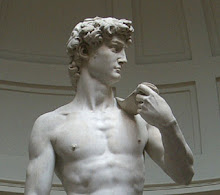Our physiology is qualitatively similiar to that of the animal kingdom. From an evolutionary perspective, this should be obvious. The Biblical perspective isn't quite as unambiguous, but should be reasonably clear after some thought and observation. While the Bible maintains that human beings differ from animals in that they possess an immortal soul, I am unaware of any verse or influential theologian testifying against the notion that on a physical level, human beings can be loosely compared to other animals. However, several physical attributes can be easily verified to exist so as to render different approaches necessary to obtain perfect posture and optimal health for human beings. These different attributes, and the concomitant approaches to accommodate those differences, serve as the neurobiological basis for the Alexander Technique.
Look at another animal's movement features, like a dog or a squirrel. You will see that while you can easily distinguish one organism from another of the same species based on differences in fur color or size, it is surprisingly difficult to notice any differences in gait or posture.But these similarities within species immediately end with humans, where everybody seems to have their characteristic "walk," sometimes you can even identify someone merely by looking at their shadow. One could posit that these differences are simply the result of our sharpened perceptions toward our kind or diminished perceptions toward our unkind, like when an American is bewildered by the sight of a million of the same faces during his first trip to China.
While heightened and diminished perception may play a role, it fails to account for the objectively measured differences we can measure. So why are humans, physiologically, so different from one another?
There are two reasons: 1) The modern industrial complex, with all of it's conveniences, has disrupted our evolutionary state of being. This problem is significant, and it's what the primal lifestyle seeks to fix, but it doesn't cover the whole picture. 2) We are bi-pedals, meaning that we walk on two legs, as opposed to the rest of the mammal kingdom.
There are numerous advantages of bi-pedalism, For one thing, it doesn't require as much muscle because it is not based on static balance, but dynamic counterbalance. Our body maintains it's uprightness not by a system of tight, short muscles holding us into place, but of a system that allows counterbalancing muscles to lengthen and contract to keep us aligned with minimal effort. We have four centers of gravity: the front of the head, the lower back, the knee cap, and the back of the heel. (A diagram would be a tremendous help in illustrating this, but I couldn't find one). Two of these centers of gravity, the lower back and heel, are at the back of the body, while the other two are in the front, counterbalancing the other two. Misplacement of these four COG will disrupt your overall posture. A typical case is locking your knees back, thrusting hips out. This mucks with your balance and forces, among other things, your shoulders to be rolled forward, and your weight placed on the middle of your feet instead of on the heel.
We have now reached the heart of the problem. Because our posture is a system of dynamic counterbalance, we must constantly assess, make judgements, and change accordingly. The proper way to move isn't perfectly hardwired into us; we possess no instinct that controls our movements with painstaking precision. We have to actively learn and sustain it.
This is why learning the Alexander Technique, especially in a world so contrary to the one of our origins and design, is necessary.
Subscribe to:
Post Comments (Atom)

Oh - We need to learn the Alexander Technique, because our brain was designed to move our body around. Wouldn't an operating manual for our own body language be handy?
ReplyDeleteA.T. teaches us to correct for time of arrival of new information, unnecessary effort, and allowing the power of practice to work constructively instead of mindlessly.
Our ability to adapt doesn't work to allow us to unlearn in the same way - by adding another habit. We need to learn to unlearn as the upper brain of strategic reasoning of A.T. can teach us. As you say, the lower brain that used to be in charge of movement has become "jaded" with modern stressful justifications of imperative need.
We need A.T. because our habits become innate as we train behavior chains of skill. Habits bury themselves into our sense of awareness so we can't feel we're doing them... They work that way so we can train the next part of the skill. A.T. teaches you to correct for this feature so you can uncover your assumptions of thinking and movement habits.
Also, we're wired to add more effort onto repetitive actions. Humans don't know our own strength. A. T. teaches the value of effortlessness in solving problems that sort themselves out when the unnecessary standing orders of interference are stopped. Yes, stopping habits is an active skill that can be learned.
So - nice hypothesis. I liked where you went with this post.